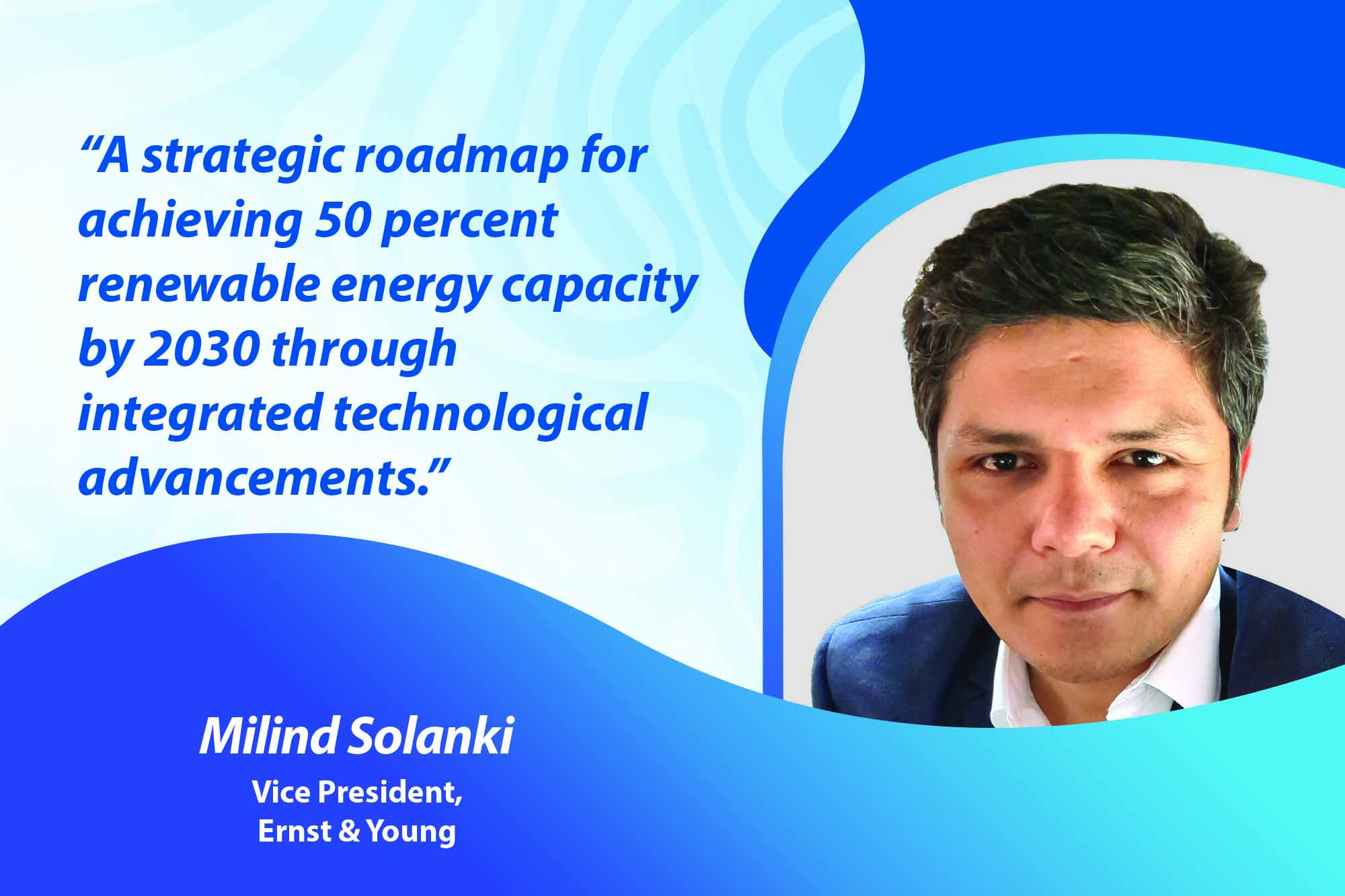Progressing RE with smart grid innovations
By EPR Magazine Editorial June 25, 2024 5:57 pm IST
By EPR Magazine Editorial June 25, 2024 5:57 pm IST

A strategic roadmap for achieving 50 percent renewable energy capacity by 2030 through integrated technological advancements.
Authored by: Milind Solanki, Vice President, EY
India’s ambitious goal of achieving 50% renewable energy generation by 2030 represents a transformative shift in its energy landscape. This transition hinges on several key factors that are crucial for navigating the complexities and opportunities inherent in such a profound change.
First and foremost is the scalability of smart grid technologies. With the rapid rise of Variable Renewable Energy (VRE) sources like solar and wind power, alongside the proliferation of Electric Vehicles (EVs), Energy Storage Systems (ESS), and Microgrids, scalable smart grid solutions become indispensable. These technologies enable efficient integration, distribution, and utilisation of renewable energy. Government incentives, regulatory frameworks, and transparent procurement processes will play pivotal roles in facilitating the adoption of these technologies across utilities. Initiatives such as the Remote Data Synchronization Scheme (RDSS) and the PM Saurya Ghar Yojana are already serving as catalysts, driving utilities towards embracing these transformative solutions. Effectively managing multiple vendors while maintaining centralised oversight during staggered implementations will be critical to ensuring seamless integration and operation.
Secondly, ensuring software and hardware interoperability is vital. Seamless communication between field devices, Supervisory Control and Data Acquisition (SCADA) systems, and Energy Management Systems (EMS) is necessary for efficient grid management. The hardware infrastructure at Main Control Centers (MCC) and Backup Control Centers (BCC) must be designed to scale effectively alongside the growth in renewable energy capacities, without compromising on functionality or reliability.
Cybersecurity emerges as another critical consideration. Protecting the integrity and security of critical infrastructure is paramount. Guidelines from the Central Electricity Authority and the National Critical Information Infrastructure Protection Centre (NCIIPC) outline cybersecurity requirements, guiding utilities in implementing robust measures to safeguard against cyber threats.
Consumer engagement forms a cornerstone of the smart grid transformation. By leveraging smart grid technologies, utilities can offer direct benefits to consumers such as reduced outage durations (System Average Interruption Duration Index – SAIDI and System Average Interruption Frequency Index – SAIFI) and improved overall service quality. Engaging consumers through awareness campaigns and educational initiatives will be essential for fostering acceptance and encouraging active participation in demand-side management programs.Institutional strengthening is equally crucial. The rapid pace of technological advancement necessitates continuous training and upskilling of employees in smart grid technologies. Supportive regulatory and policy frameworks, coupled with commitment from top management, are essential for maximising adoption rates and ensuring sustained productivity gains.
Analytics plays a pivotal role in optimising smart grid operations. By harnessing data analytics, utilities can pilot smart grid technologies in specific regions, analyze performance metrics, and optimise asset lifecycles. This approach not only enhances operational efficiencies but also contributes to cost reduction and improved grid resilience.
Prior to implementation, conducting comprehensive cost-benefit analyses is imperative. These analyses ensure that investments in smart grid technologies deliver favorable returns, considering both immediate operational efficiencies and long-term benefits such as sustainability and resilience against future energy challenges.
In conclusion, achieving India’s ambitious renewable energy targets requires a holistic approach that integrates scalable smart grid technologies, ensures interoperability and cybersecurity, engages consumers, strengthens institutional capacities, leverages analytics, and conducts rigorous cost-benefit assessments. By addressing these key factors strategically, India can effectively navigate its energy transformation journey towards a sustainable and resilient future.
We use cookies to personalize your experience. By continuing to visit this website you agree to our Terms & Conditions, Privacy Policy and Cookie Policy.